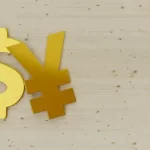Euro Rises as Dollar Falls in Global Tug-of-War.
EURUSD currency pair soared close to 1.1100 on Wednesday as global markets reacted sharply to the latest flare-up in the ongoing trade tensions between the United States and China. The Euro outperformed the US Dollar after China hit back with tough tariffs in response to President Trump’s aggressive trade stance.
This dramatic swing in the forex market was driven by investor fears of a slowing US economy and rising pressure on the Federal Reserve to cut interest rates in the coming months.
China Strikes Back: Tariffs Now at 84%.
In a bold move, China raised tariffs on a range of US goods to a staggering 84%, effective April 10. This was a direct response to President Trump’s Tuesday announcement to raise import duties on Chinese products to 104%.
The tension was building even before the announcement. Earlier in the day, Beijing released a White Paper signaling its intent to protect its economic interests and counter “unilateral and bullying” measures by the US. The document made it clear that China would “resolutely fight to the end” if pushed.
This tit-for-tat strategy is causing serious concern across financial markets, especially in the US, where fears of a looming recession are growing louder.
Markets See a 52% Chance of Rate Cut in May
As the trade war worsens, investors are betting that the Federal Reserve will be forced to cut interest rates to support the US economy. According to the CME FedWatch tool, the probability of a rate cut in May has jumped to 52.5%, up from just 10.6% a week ago.
Why is this happening? A trade war typically:
Slows down economic growth, Reduces corporate earnings, raises prices for consumers. All of this puts pressure on the Fed to act. Lower interest rates make borrowing cheaper, which can stimulate growth—but they also weaken the Dollar, contributing to the EURUSD rally.
Kashkari Warns of Inflation and Slow Growth
Adding to investor worries, Minneapolis Fed President Neel Kashkari sounded the alarm on the impact of tariffs. He warned that the latest duties would lead to:
Short-term inflation, as companies raise prices,
Lower purchasing power for consumers,
Reduced business investment,
A potential drop in GDP (Gross Domestic Product).
This combination creates a perfect storm for a slowing economy, which typically leads central banks to loosen monetary policy.
Investors Await Clarity on Central Bank’s Next Moves.
Later this week, markets will be watching the release of the Federal Open Market Committee (FOMC) minutes from March. These documents provide insights into how Fed officials are thinking about future interest rates.
Back in March, the Fed indicated it would pause rate changes until it better understands the effects of current policies, especially President Trump’s tariff strategy. But now that the trade war has escalated, those earlier plans may need to change.
Euro Gets a Boost from Political Stability in Germany.
The Euro also gained strength after Germany’s two major political parties—the center-right CDU and center-left SPD—agreed to form a new coalition government. Political uncertainty in Germany has weighed on the Euro in recent months, so this breakthrough helped restore confidence in the European currency.
A stable German government means:
Faster progress on infrastructure investments,
Potential for debt restructuring in the Eurozone,
A more coordinated response to external shocks like tariffs.
Eurozone Braces for US Trade Offensive
Despite the Euro’s short-term strength, longer-term risks remain. President Trump has hinted at slapping 20% reciprocal tariffs on European Union goods—particularly targeting Germany, which is Europe’s largest exporter to the US.
This would hit Germany’s economy hard and could spark a Eurozone-wide slowdown. In anticipation, Eurozone finance ministers are scheduled to meet in Warsaw this Friday to discuss joint responses and emergency strategies.
Šimkus Says “More Accommodative” Policy Needed
Even within Europe, central banks are preparing for tougher times. On Tuesday, Gediminas Šimkus, a key member of the European Central Bank (ECB), said the bank should cut rates by 25 basis points (0.25%) in April.
Šimkus argued that the US tariffs and weakening global demand call for a “less restrictive” monetary policy. A rate cut would help stimulate the Eurozone economy, but it might also limit further gains in the Euro if US rate cuts move faster.
What’s Next for the EURUSD?
Investors are also closely watching for the US Consumer Price Index (CPI) report on Thursday. Analysts expect headline inflation at 2.6% and core inflation at 3.0% for March. If the actual data comes in lower, it could strengthen the case for a Fed rate cut and further weaken the US Dollar.
On the flip side, if inflation surprises on the upside, the Fed may hold off on cutting rates, and the Euro rally could pause.
https://voiceoftraders.com/analysis/gold-on-the-rise-investors-rush-for-safety-amid-global-tensions
[faq-schema id=”39354″]









